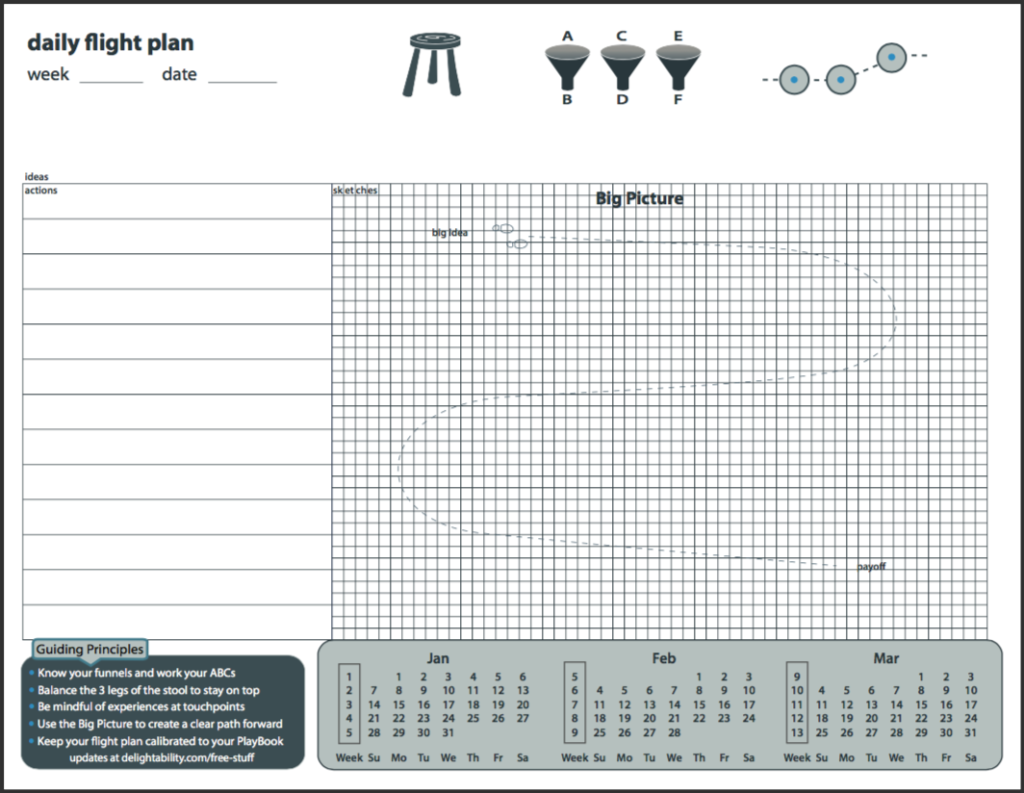Home » Freebies » Improve Habits
Success is the Product of Habit and Perseverance
The Destination Postcards exercise helps you refine or restate your purpose and envision the future you'd like to arrive at. But, you'll need more than a vision to carry you to that destination. Building better habits and being persistent is precisely the fuel that will keep you moving toward your destination.
The Shocking Truth About Habits
Habits - we all have them; some good, some bad. You brushed your teeth today, right? That took some work, at least initially. If you were like most kids, you resisted and fought your parent(s) time and again. Think of the habits you've formed. No doubt each of them took practice, whether you made fast-food a staple of your diet (and waistline) or you've mastered the piano or your tennis serve. Reflect on a time when you were practicing. What if you were interrupted frequently? In our physical world we notice these interruptions. It would be hard NOT to notice somebody cutting the line in front of you or the dog wining to go for a walk. Interruptions impede progress no matter what we are practicing. But, our world is increasingly digital and our interruptions don't always appear as blatant as the person cutting in line or canine wining in front of us. Instead, we receive an email, a text message, a phone call, a push notification from a social media application, etc. And that doesn't account for the times when we can blame ourselves for our drifting attention . The truth is most of us have formed a bad habit of preventing good habits from forming. Let's change that.
The truth is most of us have formed a bad habit of preventing good habits from forming.
Better Performance Requires Better Habits
If you want better performance in your personal and professional life then you'll need to form better habits. Unless you have immense talent for what you are doing you'll need to practice to become better. Truth is, even with special talent, you'll be even better with practice. This is true in your personal and in your business life. The image above is a photograph I took while traveling to Claude Monet's garden in Giverny, France. In addition to talent, imagine the good habits Claude must have formed to have created such a beautiful garden, water lily pond, and endlessly adapting his home to the needs of his family and professional life where he lived for 43 years until his death, This, in addition to being the founder of French Impressionist painting and continuing to be a prolific practitioner of the movement's philosophy even amid near blindness, and through the subsequent cataract surgery. Claude Monet's practice of painting was interrupted eventually only through death itself.
Techniques for Forming Better Habits
There are proven techniques for building better habits that will lead to improved performance. Neuroscience and psychological experiments like the marshmallow test, glove shrine, and invisible gorilla showcase our human foibles and give us insights into increasing our awareness and improving our behavior. But, I think the most relevant story is the one about the future you, after you try some of these techniques and witness your own performance lift. Here are a few of the proven techniques:
- Create a sacred space to free you from distractions and enable focus
- Have a sightline into what you plan to do
- Review your plan periodically for progress
- Create iconic and meaningful reminders
- Keep your elephant motivated by:
- Shrinking the change when things seem too big and unwieldy
- Celebrating and reflecting on victories along the way
- Focus on more difficult actions first
Simple and Effective Tool
That bullet list seems pretty straightforward; you probably didn't disagree with any of the points. So what has been holding you back? If you are like most people, you vacillate between a paper-based reality and the killer application or device that is finally going to get you organized and productive. Maybe you hear yourself saying, “This one will be unlike all of the others!” Maybe YOU ARE THE ONE living person who is living the paperless office dream. You have it all figured out, your process and technology working seamlessly together in your smoothly sailing life. Maybe that's the story you are telling yourself and perhaps it’s true. But, if you are reading this far, then maybe you’ve come up short and are looking for alternatives. I was, too. That is why I created a simple and effective tool to use alongside my calendar, computer, phone, and various applications and devices that I also find indispensable. I call this tool the daily flight plan and it's simple design leverages the proven techniques shared above.

The Daily Flight Plan
Create a Sacred Space Free from Distractions
You need a sacred space to free you from distractions and enable you to focus. Breaking News: You don't own your digital space. It's true. You rent the digital space you occupy from software providers and mobile and cable operators. Even when you don't pay, you do. Free software services like email or streaming music come with the price of your willingness to be distracted by looking at or listening to advertisements and receiving other mostly unwanted email and text interruptions.
Because the daily flight plan is paper-based, no digital interruption is possible. The latest interruption doesn't push relevant items further down the list. Write your dozen or so top actions you want to get done each day in the left hand side. Any time you look at it, it is still there in all of its significant glory, a beacon of future accomplishments, insulated from interruption.
You might ask, "What if I get an idea? That is sort of like an interruption." It's true that Ideas often come at times inconvenient. If you get an idea (no matter the source) simply jot a little note in the ideas section below the icons and above your actions list and Big Picture sketch grid area. You can reflect on these ideas later and advance them as desired.
Establish a Sightline Into What You Plan To Do
I place the daily flight plan over my mousepad and glance at it throughout the day. When I leave my office for a meeting, I take my flight plan and place it in my notebook or paper calendar. I can be laptop lid down, phone off, pay attention to others, and still have a sightline into my daily priorities and what’s next. The 3 month rolling calendar along with week number gives me the ability to see ahead but also make more intelligent decisions about planning work, recreation, or travel.
Review Your Plan Periodically For Progress
In addition to actions for the day, each daily flight plan has a week number and date at the top. Once you establish a rhythm you might have several "in progress" flight plans. I look at my daily flight plan a minimum of 3 times each day, once in the morning to calibrate me to what I aim to do that day, once when I break for lunch, and again toward the end of my day. I strikethrough items as I complete them. Items that show up on my daily flight plan are tied to a more comprehensive playbook. If I think of an item that is out of scope for today I'll create a daily flight plan for tomorrow (or another day). I don't retire a flight plan until I've accomplished the items on it. I'll actively work from a couple of flight plans. If I go beyond 2 or 3 I assess where I'm at, reprioritize, identify any blockers, and create a fresh flight plan. Before retiring for the evening I create a daily flight plan that will be ready to greet me in the morning. It is a very motivating way to start the morning.
Create Iconic and Meaningful Reminders
By creating iconic reminders you can cue your brain to certain actions and behavior. Product and brand marketers do this effectively to remind children how much they desire breakfast cereal with tigers or leprechauns appearing on the box. Adults play into this game by making the purchase. But, you don't need kids to see this. You click on familiar icons in software. If you practice a religion you likely practice reacting to certain symbols and cues for worship or other behavior. Flags cue us to be patriotic. Sticky notes on the refrigerator, etc. - they all cue our behavior. Behavior modification works in the classroom as well as the boardroom and every other room, too. The flight plan includes a few guiding principles (tips for good behavior), a 3 month weekly calendar (cue to plan ahead) and icons to remind you of the 3 legged stool (seek balance), 3 funnels (explore issues), and touch points (be mindful of experiences).
Keeping The Emotional Elephant Motivated
Three ways to motivate your emotional elephant are to shrink the change, show visible progress, and maximize energy.
Shrink the Change by Creating a Big Picture
When you have a task that seems daunting break it down into smaller "big chunky" steps. Sketch those 5-10 steps in the Big Picture section of the daily flight plan. You'll be surprised how your brain will transform from stuck to clear path forward in minutes. Learn more about the Big Picture in Chapter 12: The Three Psychological Zones in my book, The Experience Design Blueprint.
Show Visible Progress and Celebrate Victories
Celebrating victories is important. Once I complete an item I usually reward myself somehow. Small item equals smaller reward. Larger item equals larger reward. This provides more fuel for our emotional elephant. I collect completed flight plans into a folder and reflect on them periodically, like a trophy wall of accomplishments.
Maximize Energy on More Difficult Actions First
By paying attention to the order of items on your actions list you can effect velocity. This is because you have a fixed amount of willpower. Some items are time-bound so those naturally need to happen as scheduled. But, for items not time-bound, place the more difficult items earlier in the list (day) so you will have maximum willpower to accomplish them.
Summary
You’ve heard it before that it take 20 days (or so) to form a habit. No matter the time, if you don’t have a visible tool or reminder, and you're not leveraging what we know about the human behavior it will be harder to stay the course. Leverage what is known about neuroscience and human behavior. Try the free daily flight plan for the next 20 days. I think you and the universe will be pleasantly surprised. Please let me know how it goes.
Discuss Projects
Ready to discuss your needs?


